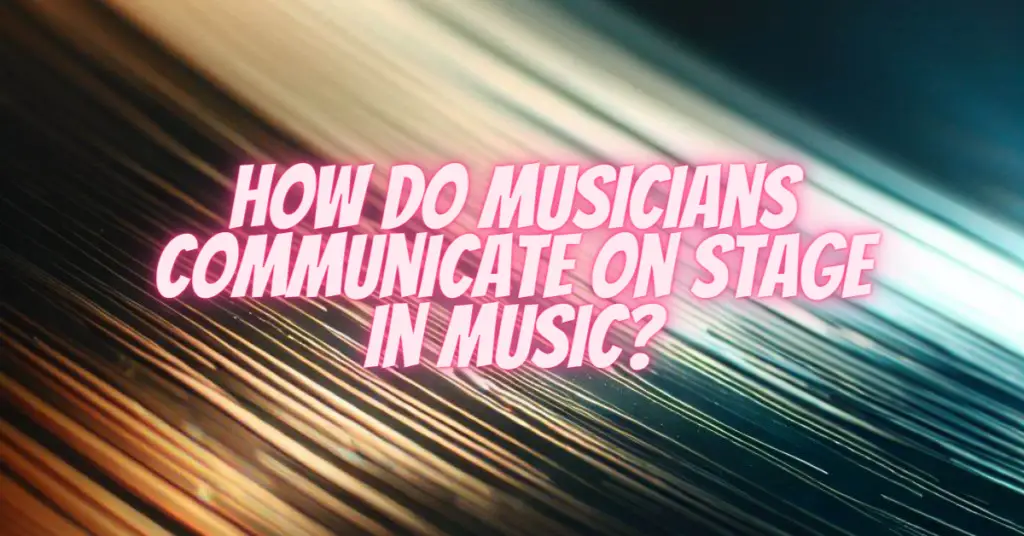When musicians take the stage, they enter a unique realm of communication—one that transcends words and relies on a shared language of melodies, rhythms, and emotions. This non-verbal dialogue is essential for creating harmonious performances and deep connections with the audience. In this article, we explore the intricate ways musicians communicate on stage, fostering a seamless blend of artistic expression and teamwork.
1. Eye Contact and Body Language:
On stage, eye contact serves as an unspoken cue, allowing musicians to anticipate transitions, tempo changes, or solos. A simple glance can convey volumes, guiding fellow musicians through the intricate passages of a composition. Body language, too, plays a significant role; subtle movements and gestures communicate dynamics, mood, and intensity, ensuring that everyone in the ensemble is in sync.
2. Listening and Reacting:
Listening is at the heart of musical communication. Musicians attentively listen to each other’s playing, adjusting their own performance in response. They react to nuances in tone, tempo, and phrasing, creating a dynamic interplay of sounds. This active listening enables musicians to adapt in real time, leading to a more cohesive and expressive performance.
3. Musical Cues:
Within a band or orchestra, musical cues act as signposts, guiding musicians through complex compositions. These cues can be as subtle as a drummer’s rimshot, a pianist’s chord accent, or a conductor’s baton movement. Musicians rely on these cues to synchronize their playing, ensuring a unified and synchronized performance.
4. Improvisation and Dialogue:
In genres like jazz and blues, improvisation takes the spotlight, allowing musicians to engage in a musical conversation. Through improvised solos, musicians communicate their thoughts and emotions, responding to the underlying chord progressions laid down by the ensemble. This spontaneous dialogue showcases the musicians’ creativity and deepens their connection on stage.
5. Empathy and Emotional Expression:
Music is a vessel for emotions, and musicians convey their feelings through their instruments. On stage, empathy plays a crucial role; musicians empathize with each other’s emotions, responding to the nuances of their playing. This shared emotional experience creates a profound connection, enabling musicians to convey deep sentiments and resonate with the audience.
6. Trust and Unity:
Trust among musicians is paramount. Each member of the ensemble trusts the others to uphold their part of the musical dialogue. This mutual trust fosters unity and cohesion on stage. Musicians rely on each other’s expertise and professionalism, creating a supportive environment that allows artistic expression to flourish.
Conclusion
The silent language of musicians on stage is a testament to the power of music to transcend barriers and foster connections. Through eye contact, active listening, musical cues, improvisation, empathy, and trust, musicians create a vibrant tapestry of sound, weaving together individual voices into a harmonious whole. This unique form of communication not only enhances the musicians’ performance but also resonates deeply with the audience, forging an emotional bond that lingers long after the final note has been played. As musicians continue to communicate on stage, they celebrate the profound beauty of their shared language, reminding us of the timeless and universal nature of music.


